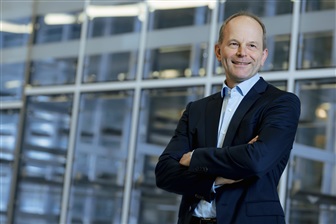IC substrate and PCB maker AT&S (Advanced Technologies & Solutions) has been expanding its IC substrate manufacturing footprint in Asia before COVID-19 outbreak. It has moved equipment into the latest plant in Malaysia, slated to start high-volume manufacturing (HVM) in the second half of next year.
In a recent interview with DIGITIMES Asia, Andreas Gerstenmayer, AT&S' CEO, shared the latest progress on the company's project in Kulim, Malaysia. It will invest EUR1.7 billion (US$1.85 billion) in the 235,000-square-meter production base to make high-end IC substrates.
The largest and first investment in SEA
Gerstenmayer said AT&S designed two manufacturing buildings for the project with opportunities to expand later. It has finished full roof-closing for the first building and already moved the first equipment in.
Given the current slower microprocessor and IC-substrate market, Gerstenmayer said the company plans to postpone some equipment investment in the second building after construction is completed. He added that AT&S needs to closely observe the volatile market conditions to decide when it will begin ordering and moving in equipment.
According to Gerstenmayer, HVM at the Kulim plant targets the second half of 2024 to start. It has been AT&S' most significant investment and the first in Southeast Asia.
Several reasons made the company choose to expand in Malaysia, Gerstenmayer said. For example, many players in the semiconductor industry have gathered in the country with a skilled labor force and capable universities.
"They have some front-end (semiconductor) factories, but they have lacked this 'linking point' of the substrates so far," he said.
AT&S' plant can close the gap in Malaysia's semiconductor supply chain, he added. It would be a win-win for the country and the company.
DIGITIMES previously reported that Malaysia accounts for about 13% of the global semiconductor assembly and test market. Roughly 50 international companies, including Micron and ASE, have set up assembly and test facilities in the country.
Observing effect of China Plus One closely
Gerstenmayer said the Kulim project will complement AT&S' internal technology and production network for IC substrate, which also encompasses the manufacturing plants in Chongqing, China, and the global R&D center in Leoben, Austria, where AT&S' headquarters is located.
He said the Chongqing site is AT&S' first IC substrate manufacturing base in Asia and the most mature one. The company finished construction of the plants as well as equipment installation and qualification in the middle of the pandemic before the company began HVM at the end of 2021.
In China, AT&S has another factory in Shanghai producing high-end PCBs besides the Chongqing plant. It also holds production capacity in India and South Korea.
Some companies have or are considering taking the China Plus One strategy due to geopolitical tension and supply chain disruption. Gerstenmayer said AT&S does not expect any significant impact on its operation in China resulting from the strategy. The company has formed good relationships, owning a "very stable running business" in the country, he added.
The CEO acknowledged that AT&S is observing the latest development closely.
"You can see the investment in Malaysia is kind of a first step to balance out our footprint," he said.
He stated that the technologies AT&S provides are shipped out globally instead of fulfilling the local demand, especially when it comes to the Chongqing site. In addition, the investment in Malaysia will prepare the company to supply customers who no longer want to be served out of China, he said.
IC substrate demand will come back
The IC substrate market has been in a downturn. But Gerstenmayer is confident that the demand will return next year.
He said overall sales have slowed since the second half of 2022, resulting in the current inventory level is still pretty high across the entire supply chain. While some experts have said the industry will recover in the second half of this year, Gerstenmayer said that prediction remains to be observed.
He said the market visibility is low and the demand volatility is very high, based on the information and data that AT&S receives every other week. Therefore, the company expects the recovery to really arrive sometime in the second quarter of 2024.
Gerstenmayer said the architectural changes of the microprocessors in server and cloud-computing applications will facilitate the market comeback. The chiplet design and heterogeneous integration will require high-end IC substrates offering a more efficient power supply, for instance.
To prepare for the upcoming processing power demand, Gerstenmayer said companies would have to satisfy the more complex needs in the following quarters.
"We are completely convinced that there will be recovery coming because the components are needed, "he said.

Andreas Gerstenmayer is the CEO of AT&S. Credit: AT&S



